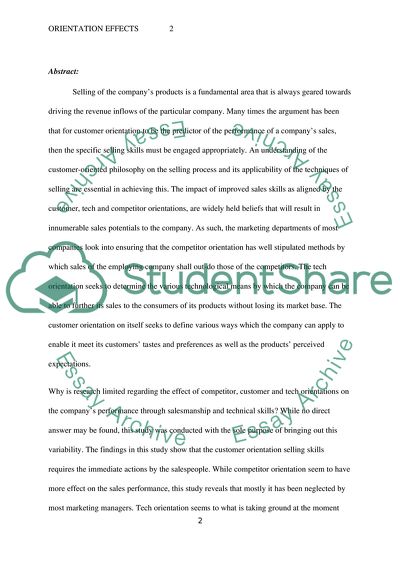Cite this document
(“The Competitor orientation, Tech orientation and Customer Orientation Essay”, n.d.)
Retrieved de https://studentshare.org/marketing/1618083-the-competitor-orientation-tech-orientation-and-customer-orientation-effect-on-performance-through-salesmanship-and-technical-selling-skills
Retrieved de https://studentshare.org/marketing/1618083-the-competitor-orientation-tech-orientation-and-customer-orientation-effect-on-performance-through-salesmanship-and-technical-selling-skills
(The Competitor Orientation, Tech Orientation and Customer Orientation Essay)
https://studentshare.org/marketing/1618083-the-competitor-orientation-tech-orientation-and-customer-orientation-effect-on-performance-through-salesmanship-and-technical-selling-skills.
https://studentshare.org/marketing/1618083-the-competitor-orientation-tech-orientation-and-customer-orientation-effect-on-performance-through-salesmanship-and-technical-selling-skills.
“The Competitor Orientation, Tech Orientation and Customer Orientation Essay”, n.d. https://studentshare.org/marketing/1618083-the-competitor-orientation-tech-orientation-and-customer-orientation-effect-on-performance-through-salesmanship-and-technical-selling-skills.


